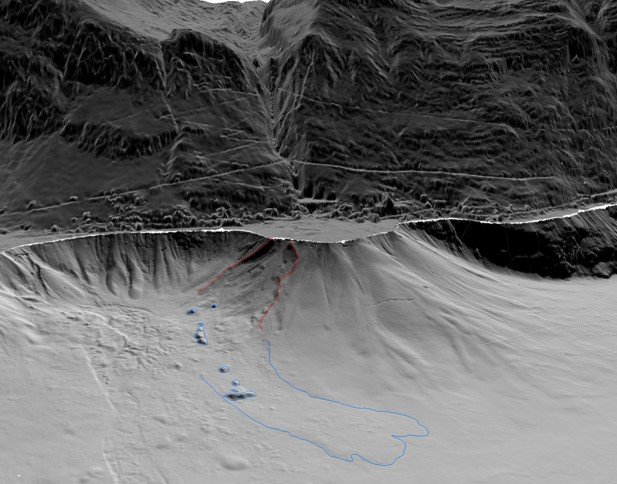S4LIDE - Austria: Studying the Significance of Subaqaueous Slides in Austrian Lakes
Funded by the Austrian Academy of Sciences (2019-2020)
PI: Univ.-Prof. Dr. Michael Strasser co-PI: Dr. Jasper Moernaut
It has been widely recognized that subaqueous landslides are of common occurrence in lacustrine and marine environments. These units have commonly been referenced to as submarine landslides in the literature. They pose a risk to coastal communities and offshore infrastructure. During the past decades geoscientists have made important contributions towards the improved understanding of submarine landslides. However, our lack of understanding of the causal mechanisms and timing of submarine landslides has hampered progress in the prediction effort, which is essential to implement appropriate mitigation measures. Complex issues like these can only be addressed via a multidisciplinary approach. The IUGS-UNESCO International Geoscience Programme (IGCP) Project 640 - S4LIDE: “Significance of Modern and Ancient Submarine Slope LandSLIDEs” was thus established as international and multidisciplinary platform allowing geoscientists from academia and industry to sustain a dialogue conducive to the integration of findings resulting from research and development efforts into a more cohesive understanding of submarine landslides.
Subaquatic landslides are also common in lacustrine environments. Given that lakes have well-constrained boundary conditions, smaller sizes and offer the possibility to be investigated on a complete basin-wide scale, studying mass movements in lacustrine environments offers a series of advantages that make lake studies vital to improve our knowledge on marine processes as well. Data from recent limnogeological surveys in Austria using state-of-the-art geophysical subsurface imaging and sediment coring techniques reveal striking evidence of subaquatic landslides being common features also in Austrian lakes. This ÖAW S4LIDE-Austria project will – for the first time - systematically analyze and investigate limnogeological datasets of Austrian lakes for subaquatic landslide. This aims at compiling consistent morphometric characterization, dating- and process-based interpretation of lacustrine landslides in Austrian lakes. Two special focus sites will be Achensee (Tyrol) and Wörthersee (Carinthia), for which geophysical data evidence subaquatic mass-transport complexes and naturally vs. anthropogenically triggered subaquatic landslides, respectively; and on which added landslide-targeted coring can be conducted by piggy-backing on separately funded coring campaigns in 2019. Detailed investigations on these landslides and compiled results from Austrian subaquatic landslides elaborated by the project team consisting of PI Michael Strasser, co-PI Jasper Moernaut and their jointly-supervised PhD students Patrick Oswald, Christoph Daxer and Maddalena Sammartini, will eventually be integrated with the global datasets to study fundamental and/or compare different subaquatic landslide processes across scales and settings. The to be established new Austrian subaquatic landslide data set bears high potential to contribute data from confined case studies in lakes as models for ocean margins to address some of the most pressing research questions on geohazard, environmental implication and economic significance of submarine landslides, as tackled by the broad international research community within the IGCP-640 project.
Project Members:
Christoph Daxer, Ariana Molenaar, Patrick Oswald, Maddalena Sammartini,

